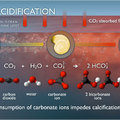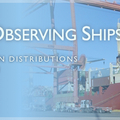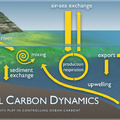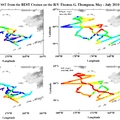Alaska uwpCO2
In support of PMEL's Coastal Carbon Dynamics and Ocean Acidification programs, we have outfitted NOAA ships and container ships with underway pCO2 systems to document the distributions and air-sea flux of CO2 in the Gulf of Alaska and the Bering Sea. In recent years, we have expanded our suite of measurements to include pH and O2 saturation on selected ships.
The goal of this work in the Arctic is to develop a better understanding of the natural variability in carbon system parameters like pH and pCO2, and how these properties regulate and are regulated by air-sea exchange, ecosystem community production, and ocean circulation patterns. By doing this, it will be possible to determine how physical forcing (e.g., sea-ice, nutrient supply, stratification, etc.) and biological responses exert fundamentally different controls on the marine carbon cycle and how these mechanisms may buffer or accelerate the response of this region to future climate change and ocean acidification.







